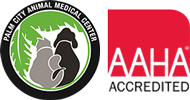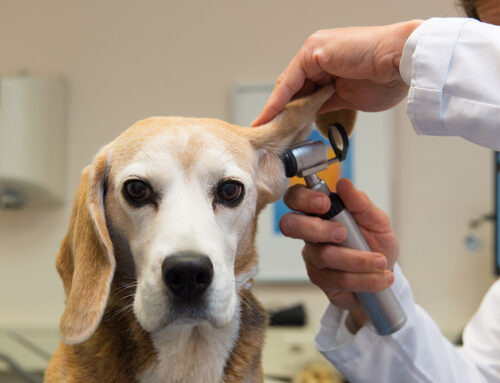The structure and function of the eye is similar to that of a camera. The camera has a lens to focus light on film, while the eye has a lens to focus light on the retina which sends signals to the brain to be interpreted into the world around us. An opaque lens is called a cataract. The most common cause in dogs is inherited cataracts, but other cataracts form after traumatic injuries or systemic disease such as Diabetes Mellitus. Besides hereditary cataracts, diabetes is probably the second major cause of cataracts. Other cataracts appear spontaneously and are related to other age changes that occur as your dog gets older. Most dogs have a cloudy lens as they get older called nuclear sclerosis. They are bluish in color, but are not cataracts and do not case blindness. Hereditary cataracts can be seen in many breeds including Cocker Spaniels, Labs, Poodles, and Boston Terriers.
The affect cataracts will have on your dog can vary from almost no affect to total blindness. If cataracts occupy less than 30% of the lens or only one lens, the vision will likely be almost normal. Noticeable impairment occurs when greater than 60 % of the lens is affected. If opacity progresses to 100%, your dog will be blind. The progression depends on the type of cataract, the breed, and other risk factors. Veterinary ophthalmologists can surgically remove cataracts and restore failing vision caused by cataracts in your pet. After surgery, several medications are placed in the eye to prevent infection and inflammation. It is imperative they are placed in the eye frequently as per the ophthalmologist instructions. Most pets have few complications and return to normal activity-running and playing-within just a short time of the surgery. Your veterinarian can arrange a referral appointment to an ophthalmologist to further evaluate your pet’s condition and determine appropriate treatment options.
Since the major cause of cataracts is heredity. Cataract progression varies from breed to breed and individual to individual. Cataracts may develop relatively early in life in some breeds, but in others the first signs are detected when the dog is older. Progression is so slow in some that dogs still have reasonable sight well into old age. Efforts can be made to prevent inherited cataracts by careful and conscientious breeding. Many veterinary ophthalmologists offer Eye Certification Programs that offer breeders the opportunity to screen their breeding stock and make sure they are producing disease-free puppies.
Established in 1981, Palm City Animal Medical Center is dedicated to providing the best possible care for your pets. With focuses on compassionate care in surgery, physical therapy and rehabilitation, preventative medicine, extensive diagnostics, and emergency service, Palm City Animal Medical Center combines exceptional medical care with a caring philosophy for pets and their owners. For more information, call 772-283-0920, visit www.palmcityanimalmedicalcenter.com or find us on Facebook at www.facebook.com/PalmCityAnimalClinic








Leave A Comment